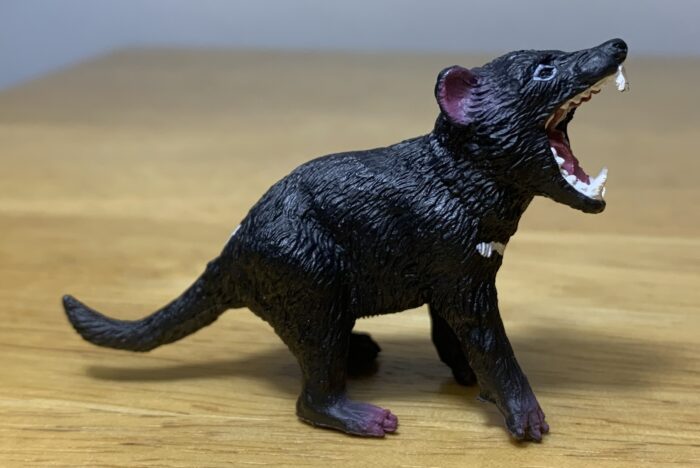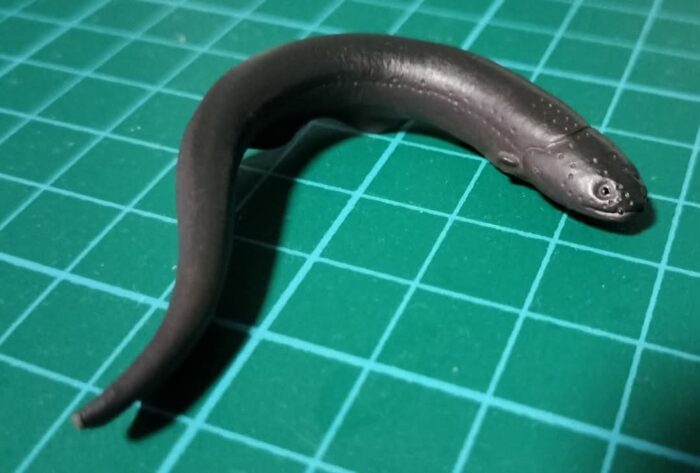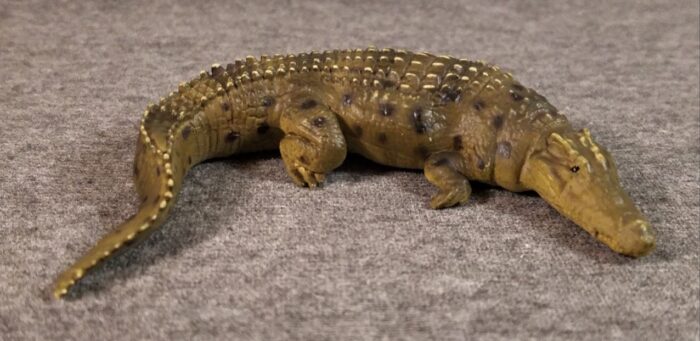Although they’re most recognized by collectors for their prehistoric animal models, PNSO has also produced a number of extant animal figures over the years, aptly named the Living Animal Model Series, in both large and small sizes. In 2015 PNSO released thirteen Small Model Series figurines as an African Animals set, sold separately or bundled all together.
Humpback Whale (Sealife by Mojö Fun)

Although the blue whale is the largest of all baleen whales it seems that the humpback whale (Megaptera novaeangliae) is the most popular, but maybe that’s just my personal assumption after seeing it plastered all over Christian Lassen school supplies in the 90’s. The toy market seems to back up my claim though, with Toy Animal Wiki cataloging several more humpback figures than blue whale.
Tiger Family Set (Toymany)
Bottlenose Dolphin (Sealife by CollectA)

Review and images by Sam; edited by bmathison1972
The bottlenose dolphin (Tursiops truncatus) is arguably the most iconic marine mammal. Known for their playful, friendly personalities and their amazing intelligence, they have appeared in many TV shows and movies, and are a popular attraction at aquariums and marine parks, so it is no surprise that there are quite a few toys based on them, and today’s review covers just one of these toys.
Wallaby (Wild Safari Wildlife by Safari Ltd.)

The Safari Ltd. wallaby was released in 2016 and sculpted by Doug Watson. Although currently available on Safari’s website it has been perpetually on sale for some time, which likely means it has been retired and is being cleared out. Let’s take a closer look at it and see if it’s worth grabbing before it’s gone.
Green-winged Teal (Large Ducks by AAA)

The Green-winged Teal (Anas crecca) is a small dabbling duck that occurs throughout much of the Northern Hemisphere. Historically, the American populations were classified as either a subspecies of the Eurasian teal (A. crecca carolinensis) or as a valid species (A. carolinensis), but now the American and Eurasian populations are lumped into one widespread species.
Bluegill, Pumpkinseed, Crappie (3″ Pond Fish set Part 2 by Replica Toy Fish)

And here we have the final trio of the original 3″ fish produced by Replica Toy fish, the second half from the ‘pond fish’ set. Similar to my look at the two halves of the American Angler set (here and here), the first Pond Fish set featured a range of taxonomic groups, and this second half will be all from a single family–Centrarchidae, the basses and sunfish.
Tasmanian Devil (Wildlife by Mojö Fun)

With the extinction of the thylacine the Tasmanian devil (Sarcophilus harrisii) claimed the title of the largest extant marsupial predator, weighing up the 18 lbs. (8 kg.) in the case of males. Not a terribly impressive size for the largest marsupial predator, I’ve had cats that outweigh the Tasmanian devil!
Largemouth Bass, Channel Catfish, Yellow Perch (3″ Pond Fish set Part 1 by Replica Toy Fish)

Back with another trio from the original dozen three inch fish released by Replica Toy Fish. When packaged in the small acrylic tubes, it was referred to as the ‘Pond Fish’ set. While the ‘Northwoods’ set featured popular angling fish found primarily in northern North America, the next six are normally considered more southern in their natural distribution–but as with any popular sport fish, they’ve found themselves spread, legally or not, into many other regions of North America and the world.
Monarch Butterfly, caterpillar (Hidden Kingdom Smithsonian Insects by Safari Ltd.)

In following the trends of Safari Ltd.’s Tennessee Aquarium Salamander, Monterey Bay Aquarium, and Marsh Education Fish collections, I am going to attempt to finish, or assist in finishing, Safari’s Hidden Kingdom Smithsonian Insects collection (the lubber grasshopper, black widow, and flea have already been reviewed). If I remember correctly, the figures were originally produced by Safari in the late 1990s alongside a traveling museum exhibit sponsored by the Smithsonian Institution that featured large animatronic insects.
Electric Eel (Aquatales Series 5 by Kaiyodo)

Review and images by JimoAi; edited by bmathison1972
The electric eel (Electrophorus electricus) is a species of knifefish, despite their eel-like appearance, that is native to freshwater habitats of the Guiana Shield of South America, with the Amazon Basin and Brazil Shield housing the other members of its genus, E.
Star-nosed Mole (The Mysteries of Living Things Encyclopedia by Takara Tomy A.R.T.S.)

The star-nosed mole (Condylura cristata) is an animal that has amazed me since childhood, and not unlike the osprey of my last review, a species I always wanted a figure of. I am genuinely surprised it took this long for one to be produced. Maybe there have been others, I am not privy to every animal figure or toy produced throughout history, but today’s 2024 model by Takara Tomy A.R.T.S.





